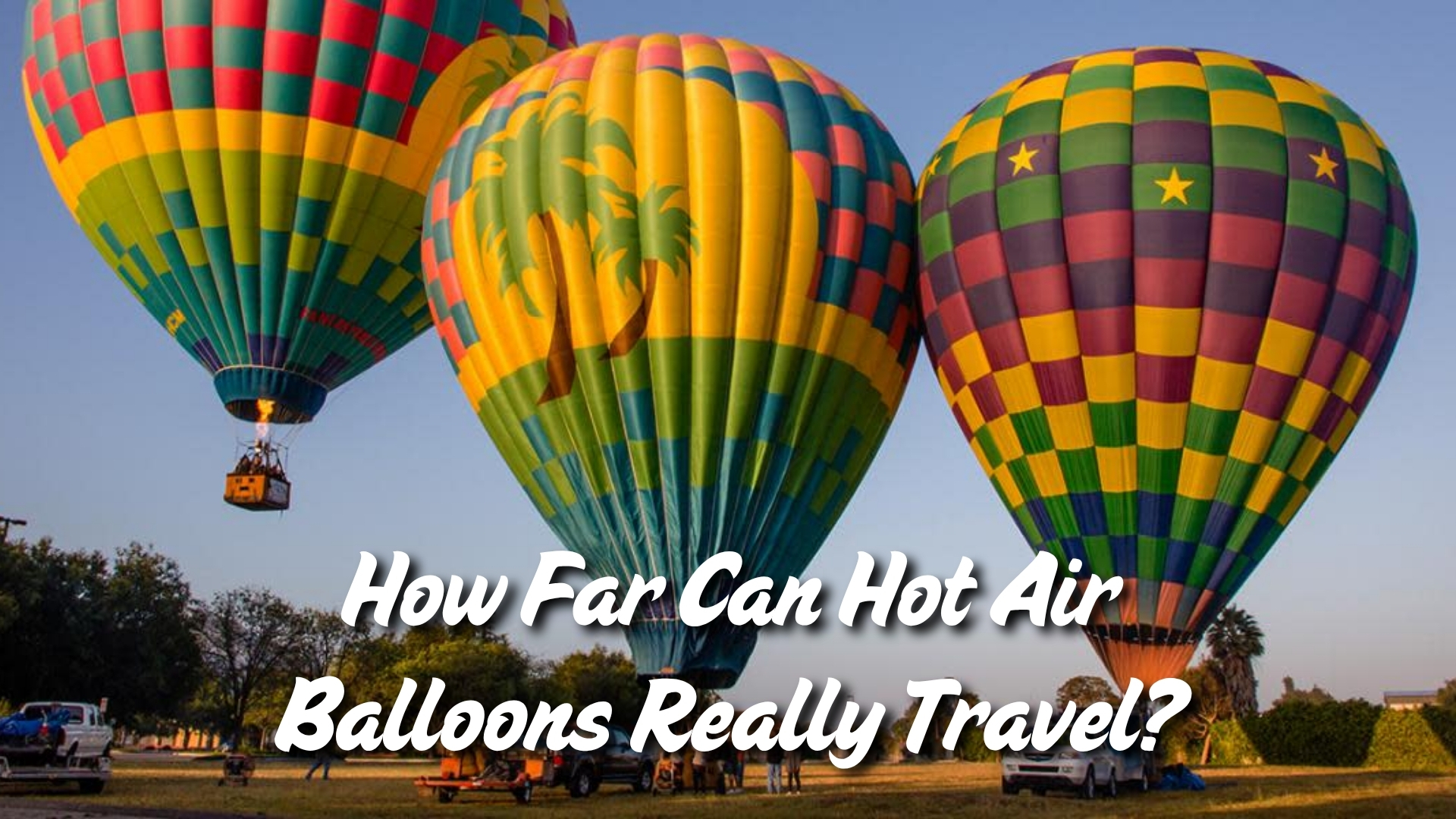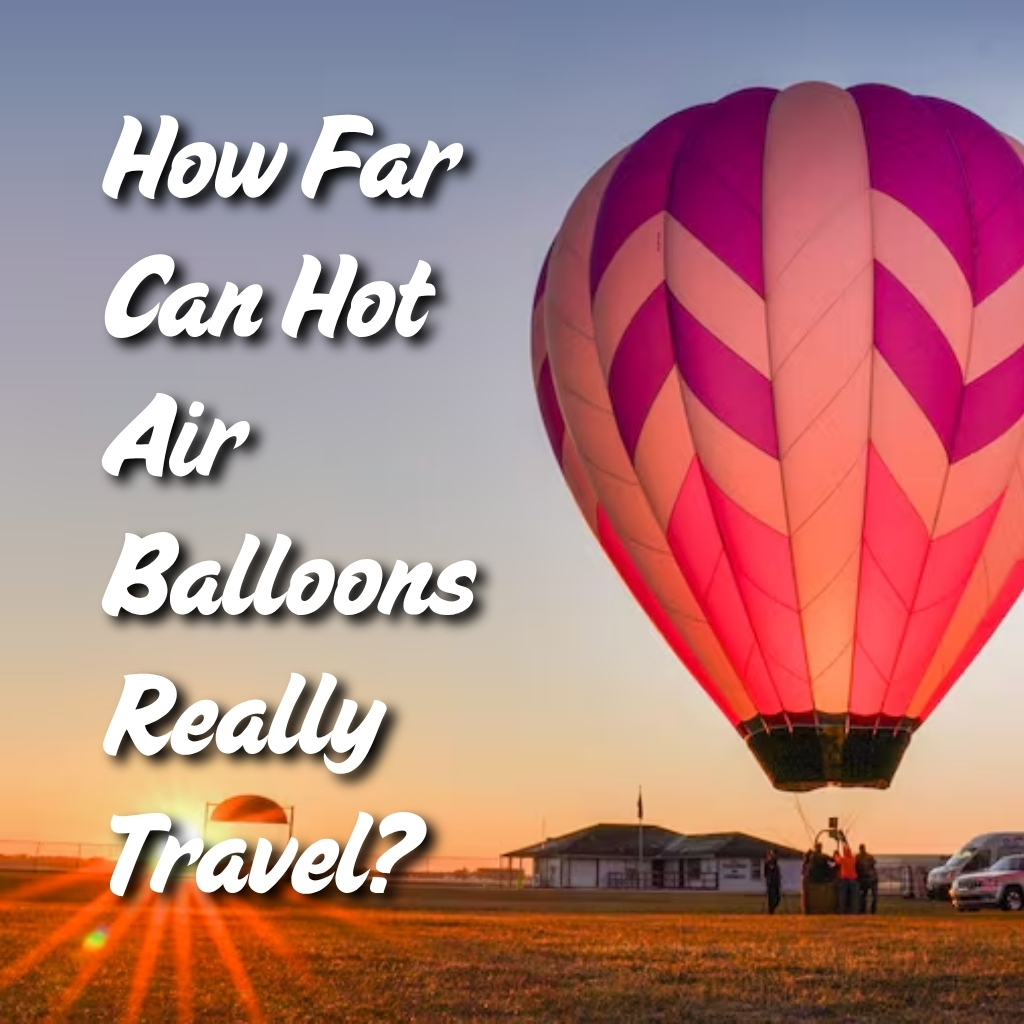Hot air balloons have captured the human imagination for centuries. Their graceful ascent, the vibrant colors against the sky, and the sense of serene adventure make ballooning a unique experience. But beyond the beauty and tranquility, many enthusiasts and curious minds often ask: How far can hot air balloons really travel?
Whether you’re considering your first balloon ride, dreaming of a cross-country adventure, or simply intrigued by the science of flight, understanding the range of hot air balloons reveals a fascinating blend of physics, meteorology, and human ambition. In this comprehensive guide, we’ll explore the factors that determine how far hot air balloons can go, the world records set by daring balloonists, and what you can expect from a typical balloon flight.
Read on to discover the limits—and the possibilities—of hot air balloon travel!
How Far Can Hot Air Balloons Really Travel? Exploring the Factors

The Basics: How Hot Air Balloons Work
Before diving into distances, it’s important to understand how hot air balloons operate. A hot air balloon consists of three main parts:
- Envelope: The colorful fabric balloon that holds heated air.
- Burner: Heats the air inside the envelope.
- Basket: Where passengers and pilot ride.
Hot air rises because it’s less dense than cooler air, allowing the balloon to float. However, balloons cannot be steered like airplanes; they drift with the wind, and their direction is controlled by ascending or descending to catch winds at different altitudes.
What Determines How Far a Hot Air Balloon Can Travel?
Several factors influence the distance a hot air balloon can travel:
1. Wind Speed and Direction
- Primary Factor: Since balloons move with the wind, the speed and direction of prevailing winds are critical.
- Typical Wind Speeds: Most recreational flights occur in winds of 4–8 mph (6–13 km/h) for safety.
- Long-Distance Flights: Special flights may seek higher altitude winds, which can be much faster.
2. Flight Duration
- Fuel Supply: The propane tanks that fuel the burner limit flight time, typically 1–2 hours for standard rides.
- Weather Conditions: Flights are usually scheduled for calm weather, limiting duration and distance.
3. Balloon Size and Payload
- Larger Balloons: Can carry more fuel and travel farther.
- Payload: More passengers or equipment mean more weight, which can reduce range.
4. Altitude
- Higher Altitudes: Winds are generally stronger, allowing for greater distances.
- Oxygen and Temperature: High-altitude flights require supplemental oxygen and special gear.
5. Weather and Safety
- Storms, Rain, and Turbulence: Limit when and how far balloons can fly.
- Landing Sites: Pilots must plan for safe landing areas, which can restrict distance.
Typical Hot Air Balloon Flight Distances
Recreational Flights
- Average Distance: 3–10 miles (5–16 km)
- Duration: 1–2 hours
- Purpose: Enjoying scenic views, photography, and the experience of flight
Adventure and Record-Setting Flights
- Long-Distance Flights: 50–100 miles (80–160 km) or more
- Transcontinental/Transoceanic: Thousands of miles, with special equipment and planning
Table: Hot Air Balloon Flight Ranges
| Type of Flight | Typical Distance | Typical Duration | Notes |
|---|---|---|---|
| Recreational | 3–10 miles (5–16 km) | 1–2 hours | Most common, scenic flights |
| Adventure/Long-Distance | 50–100+ miles (80–160+ km) | 2–6 hours | Requires planning, larger balloons |
| Record-Setting | 1,000+ miles (1,600+ km) | Days | Specialized balloons, global winds |
World Records: How Far Have Hot Air Balloons Traveled?

The Longest Hot Air Balloon Flight
- Record: 21,027 km (13,019 miles)
- Pilots: Bertrand Piccard and Brian Jones
- Balloon: Breitling Orbiter 3 (Rozière balloon, combining hot air and helium)
- Duration: 19 days, 21 hours, 47 minutes (March 1–21, 1999)
- Route: Around the world, starting in Switzerland and landing in Egypt
Notable Achievements
- First Transatlantic Flight: Double Eagle II, 1978, 3,120 miles (5,030 km)
- First Solo Around-the-World: Steve Fossett, 2002, 20,626 miles (33,195 km) in Spirit of Freedom
Note: These record flights used specialized balloons (Rozière or gas balloons) designed for endurance, not typical recreational hot air balloons.
Hot Air Balloons vs. Other Types of Balloons
Hot Air Balloons
- Fuel: Propane
- Flight Time: 1–2 hours (recreational)
- Range: Up to 100 miles (160 km) in ideal conditions
Gas Balloons
- Fuel: Hydrogen or helium
- Flight Time: Several days
- Range: Thousands of miles
Rozière Balloons
- Hybrid: Combines hot air and gas
- Flight Time/Range: Used for world records, can circle the globe
Comparison Table
| Feature | Hot Air Balloon | Gas Balloon | Rozière Balloon |
|---|---|---|---|
| Fuel | Propane | Helium/Hydrogen | Propane + Helium |
| Typical Range | 3–100 miles | 100–2,000+ miles | 10,000+ miles |
| Flight Duration | 1–6 hours | Up to several days | Up to several weeks |
| Control | Altitude only | Altitude only | Altitude only |
| Use | Recreation | Adventure/Records | Records/Global |
What Happens During a Typical Hot Air Balloon Flight?
Pre-Flight
- Weather Check: Pilots assess wind speeds, direction, and forecast.
- Launch Site Selection: Chosen based on wind direction and available landing sites.
In the Air
- Altitude Adjustment: Pilots use the burner to ascend or descend, seeking favorable winds.
- Navigation: Balloons drift with the wind; pilots communicate with chase crews on the ground.
Landing
- Site Selection: Pilots look for open, safe areas to land.
- Chase Crew: Follows the balloon to assist with landing and pack-up.
Factors That Limit Hot Air Balloon Range
1. Fuel Limitations
- Standard propane tanks restrict flight time.
- More fuel adds weight, requiring larger balloons.
2. Weather and Safety
- Flights are only conducted in safe, predictable weather.
- Storms, high winds, or rain can ground flights.
3. Legal and Airspace Restrictions
- Controlled airspace, airports, and urban areas may limit possible routes.
4. Landing Availability
- Pilots must always plan for a safe landing spot within range.
How Pilots Plan for Long-Distance Balloon Flights
1. Weather Forecasting
- Detailed analysis of wind patterns at multiple altitudes.
- Planning to catch “jet streams” or favorable currents.
2. Fuel Management
- Carrying extra tanks or using larger envelopes.
- Calculating burn rates and expected duration.
3. Chase Crew Coordination
- Ground teams follow the balloon to assist with landing and recovery.
4. Emergency Planning
- Backup systems, communication devices, and contingency plans.
FAQ: Hot Air Balloon Travel Distances
How far can a hot air balloon go in one flight?
Most recreational hot air balloons travel 3–10 miles (5–16 km) in a typical flight. With special planning and favorable winds, some can travel 50–100 miles (80–160 km) or more.
What is the longest distance ever traveled in a hot air balloon?
The world record for the longest hot air balloon flight is 21,027 km (13,019 miles) by Bertrand Piccard and Brian Jones in 1999, using a Rozière balloon.
Can a hot air balloon cross the ocean?
Yes, but only with specialized balloons and extensive planning. The first successful transatlantic flight was in 1978 by the Double Eagle II gas balloon.
What limits how far a hot air balloon can travel?
Key factors include fuel supply, wind speed and direction, weather conditions, and the availability of safe landing sites.
How long can a hot air balloon stay in the air?
Recreational flights typically last 1–2 hours. Specialized balloons for record attempts can stay aloft for days or even weeks.
Are hot air balloons steered?
No, hot air balloons drift with the wind. Pilots can only control altitude to catch winds at different levels.
Conclusion: The Realities and Wonders of Hot Air Balloon Range
Hot air balloons are both a marvel of engineering and a testament to human curiosity. While the average recreational flight covers just a handful of miles, the potential for long-distance travel is limited only by fuel, weather, and the imagination of daring pilots. From scenic sunrise journeys to record-breaking global adventures, hot air balloons continue to inspire awe and wonder.
Key Takeaways:
- Most hot air balloon flights travel 3–10 miles (5–16 km).
- With special planning, flights of 50–100 miles (80–160 km) are possible.
- Record-setting balloons have circled the globe, traveling over 13,000 miles (21,000 km).
- Range is determined by wind, fuel, weather, and safety considerations.
Whether you’re planning your first flight or dreaming of a grand adventure, understanding the limits and possibilities of hot air balloon travel adds a new dimension to this timeless form of flight.
Optional: Hot Air Balloon Ride Experiences and Tour Options
If you’re inspired to take to the skies, here are some popular hot air balloon experiences:
- Local Scenic Flights: Enjoy sunrise or sunset views over valleys, vineyards, or countryside.
- Festival Flights: Participate in mass ascensions at balloon festivals worldwide.
- Adventure Expeditions: Seek out long-distance or cross-country balloon rides for a unique thrill.
Top Hot Air Balloon Destinations:
- Cappadocia, Turkey
- Napa Valley, California
- Albuquerque, New Mexico (International Balloon Fiesta)
- Serengeti, Tanzania
- Loire Valley, France
No matter your destination, a hot air balloon ride offers a perspective—and a sense of freedom—unlike any other.
Ready to experience the magic of flight? Book a hot air balloon ride and see how far your adventure can take you!